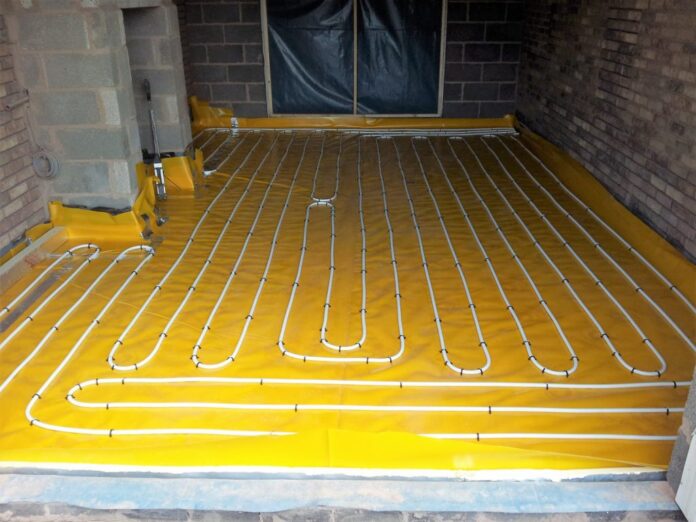There’s no doubt that underfloor heating offers a sense of luxury. Perhaps you’ve experienced it at a friend’s house or onholiday, and dream of feeling that same warmth underfoot in your own property. Yet the hassle and cost of installation can be off-putting – especially if you’re happy with your current central heating system.
That’s why it’s good to know that radiators and underfloor heating can actually work together. Contrary to popular belief, you can heat separate zones through one efficient combi boiler– such as those available from City Plumbing – with only small adjustments.
This flexibility is a key reason why the underfloor heating market is one of the fastest growing sectors in the heating industry. Read more about how underfloor heating could work in your home below.
How underfloor heating works
Underfloor heating systems produce gentle waves of warmth that rise through the air and heat rooms – along with the objects and people within them – evenly.
The two primary types are wet and dry. Wet systems pump water from a boiler through a network of underfloor pipes, while dry systems generate heat through thin cabling or matsthat are connected to mains electricity.
The right type for you is likely to depend on the area of your house you plan to heat and what type of project it is – which we’ll come on to below.
Combining radiators with dry or wet underfloor heating systems
Dry systems are ideal if you only want to heat one room, such as a bathroom or kitchen. Your radiators will run completely separately in other rooms. Dry underfloor heating is typically far quicker and easier to install, especially in retrofit projects– but isn’t considered energy efficient if you want to use it throughout more of your house.
Wet systems on the other hand require more work to install due to the laying of pipework, which may involve raising the ground to create extra space. It’s best done at the build stage of a property but can still be done retroactively.
Installing a wet system alongside your central heating involves adding a zone valve to your boiler. This way you can direct heat to different zones independently and avoid wasting energy.
Costs compared
Electric systems are usually cheaper to buy for small areas, while installing a wet underfloor heating system will cost more initially due to the extra labour required. Over time however the running costs of a wet system can be far lower, especially if heating a larger area of your home.
Is underfloor heating on your home improvement wishlist?







